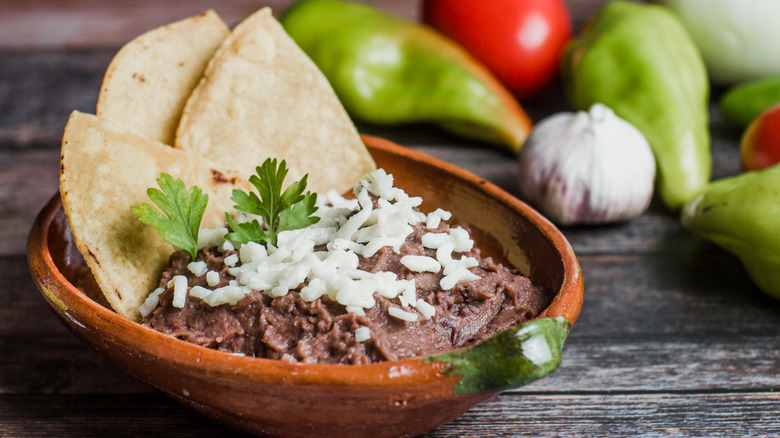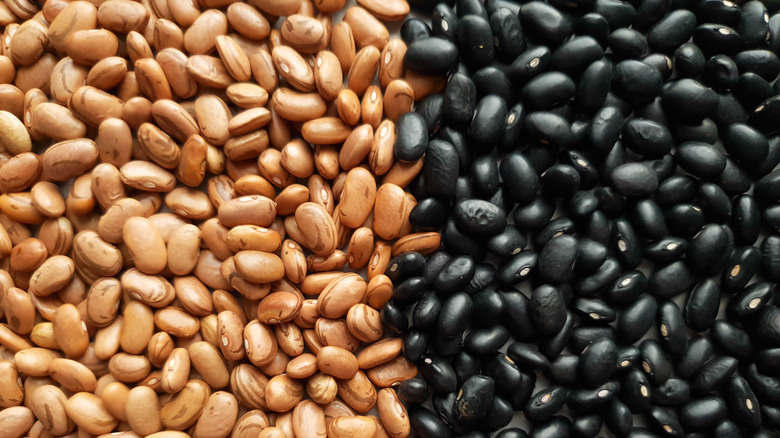The Difference Between Refried Black Vs Pinto Beans
While simple, cheap, and easy, some of you — particularly the vegetarians and vegans — reading this are probably eating rice and beans for dinner more often than you'd like to admit. There's truly no shame in it, though. From the red beans and rice original to the American South, to the popular Brazilian dish known as feijoada, and from Nigerian jollof rice to Persian sabzi polo, rice and beans are hardly ever just that. The same can be said for the beloved Tex-Mex-style refried beans you order with your margarita every Taco Tuesday. From the various aromatics to the fats used, much more goes into them than you might think. But, first and foremost, it starts with using the right beans.
While no two servings of refried beans are ever made the same, the one thing you will find consistent is the use of pinto beans over black — outside of Oaxaca, Mexico, at least. That's because, compared to black beans, which have a much firmer consistency, pinto beans are plump, tender, and creamy. Pinto beans make stunning refried beans because they mash up easily and have a slightly sweet, earthy flavor that you simply don't get when you use black beans. Paired with a serving of fresh, Spanish rice, refried pinto beans provide the perfect base for other ingredients whether it's beef, chicken, pork, avocado, sour cream, or fresh cilantro.
Different uses for black and pinto beans
While often used interchangeably, there are some key differences between black and pinto beans that make each one better for different purposes. As is the case in refried beans, pinto beans tend to be best in dishes where their plump, tender texture is advantageous. Despite being larger than black beans, their soft texture means that they break down and absorb flavors much better, and it's why they're usually the preferred bean for your favorite Mexican dishes. However, there are some uses where black beans are preferred.
Black beans have a firmer, hardier texture than pinto beans. When they're used to make refried beans, you won't get the same creamy texture as you would if you used pintos — and there are instances where that works to their advantage. Because they're able to withstand higher textures and resist moisture, black beans won't get soggy in your southwest pasta salad or turn to mush in your spicy black bean soup, and they're the bean of choice for Oaxacan-style refried beans.
Although different than the Mexican refried beans you may be used to, Oaxacan-style refried beans are traditionally made with black beans. Using fats like lard, and aromatics like anise and bay leaves, they're prepared similarly, but end up tasting vastly different because of the texture of the beans. Topped with cotija cheese and cilantro, black refried beans are a specialty in their own right, and can be a nice way to switch things up.

